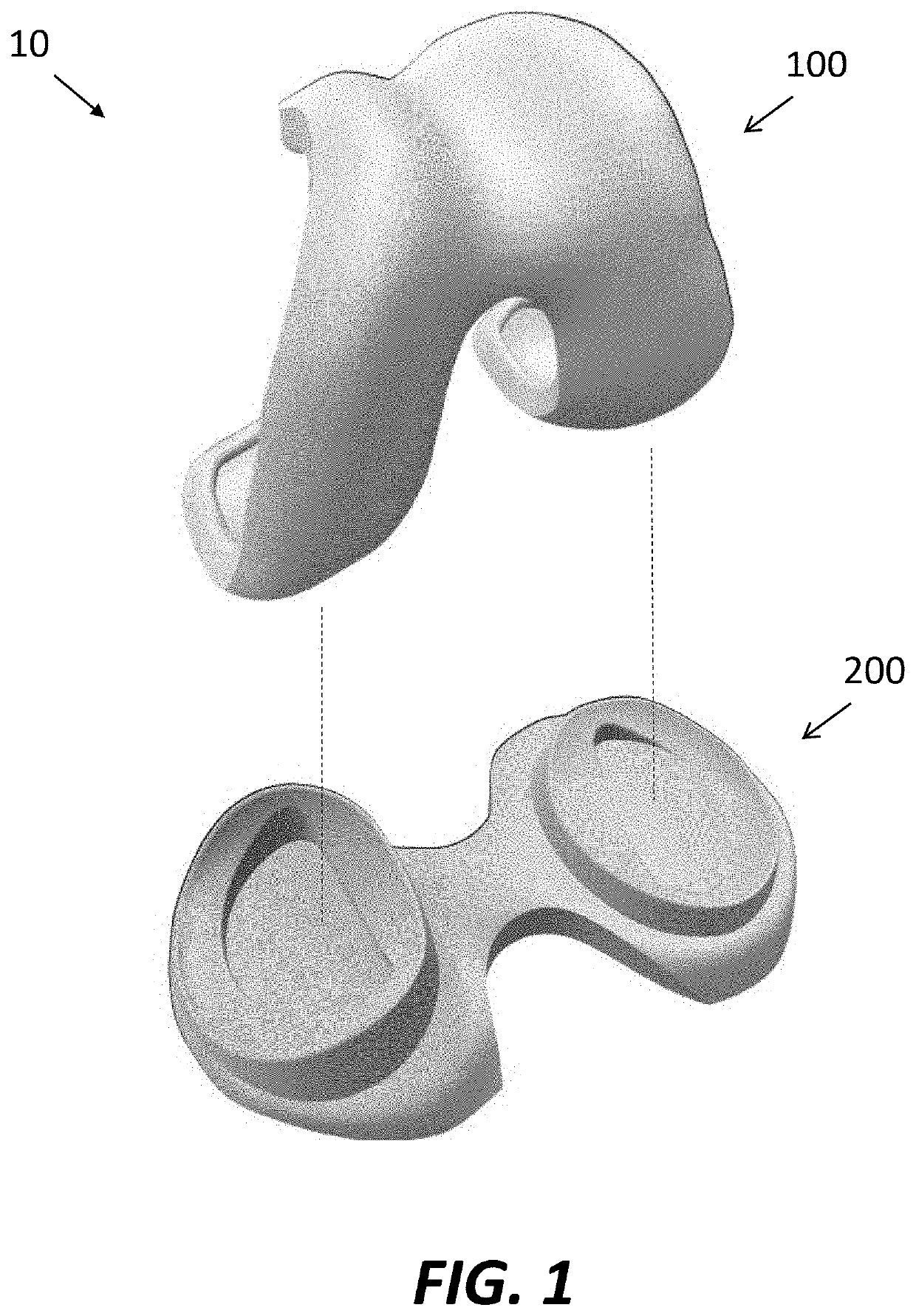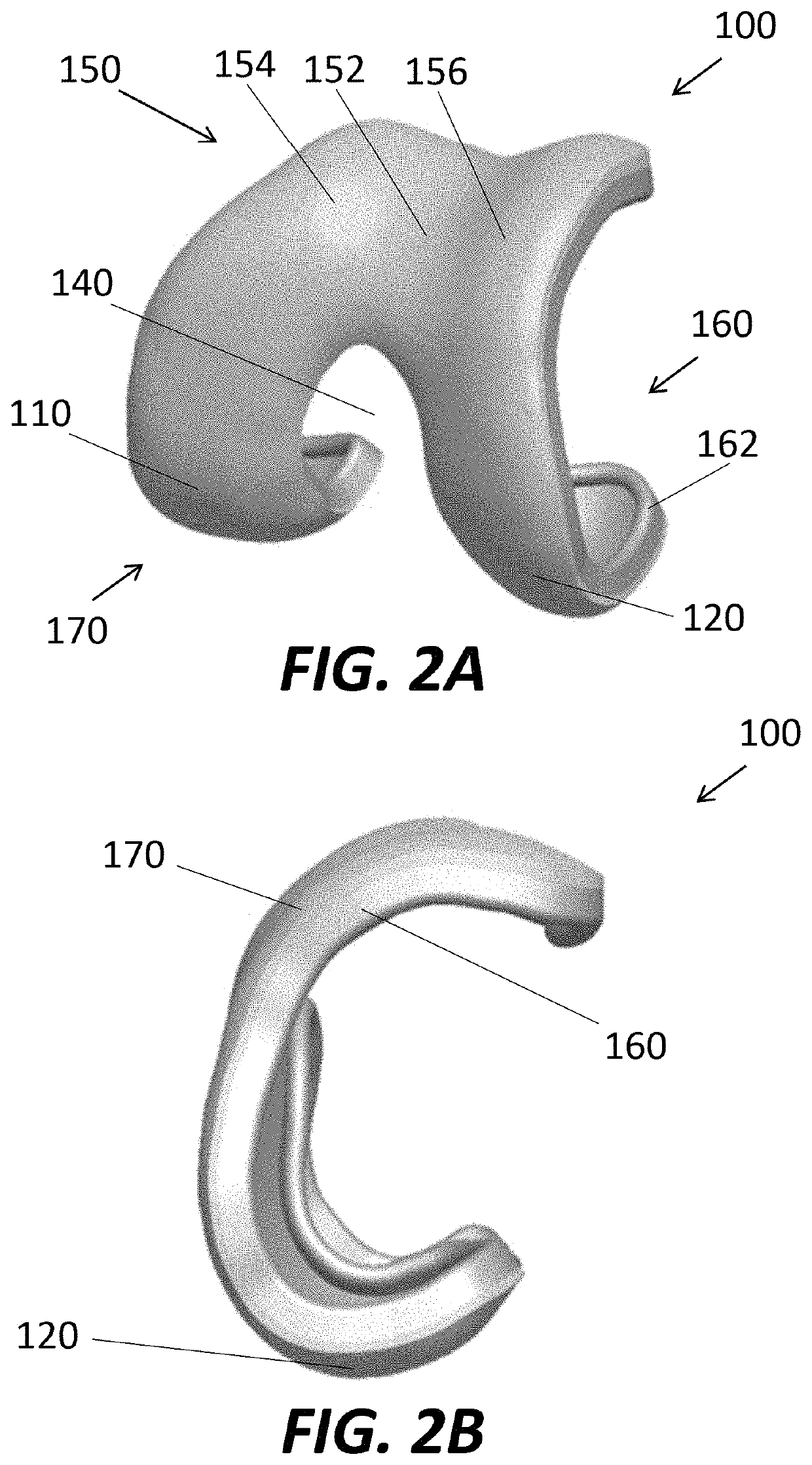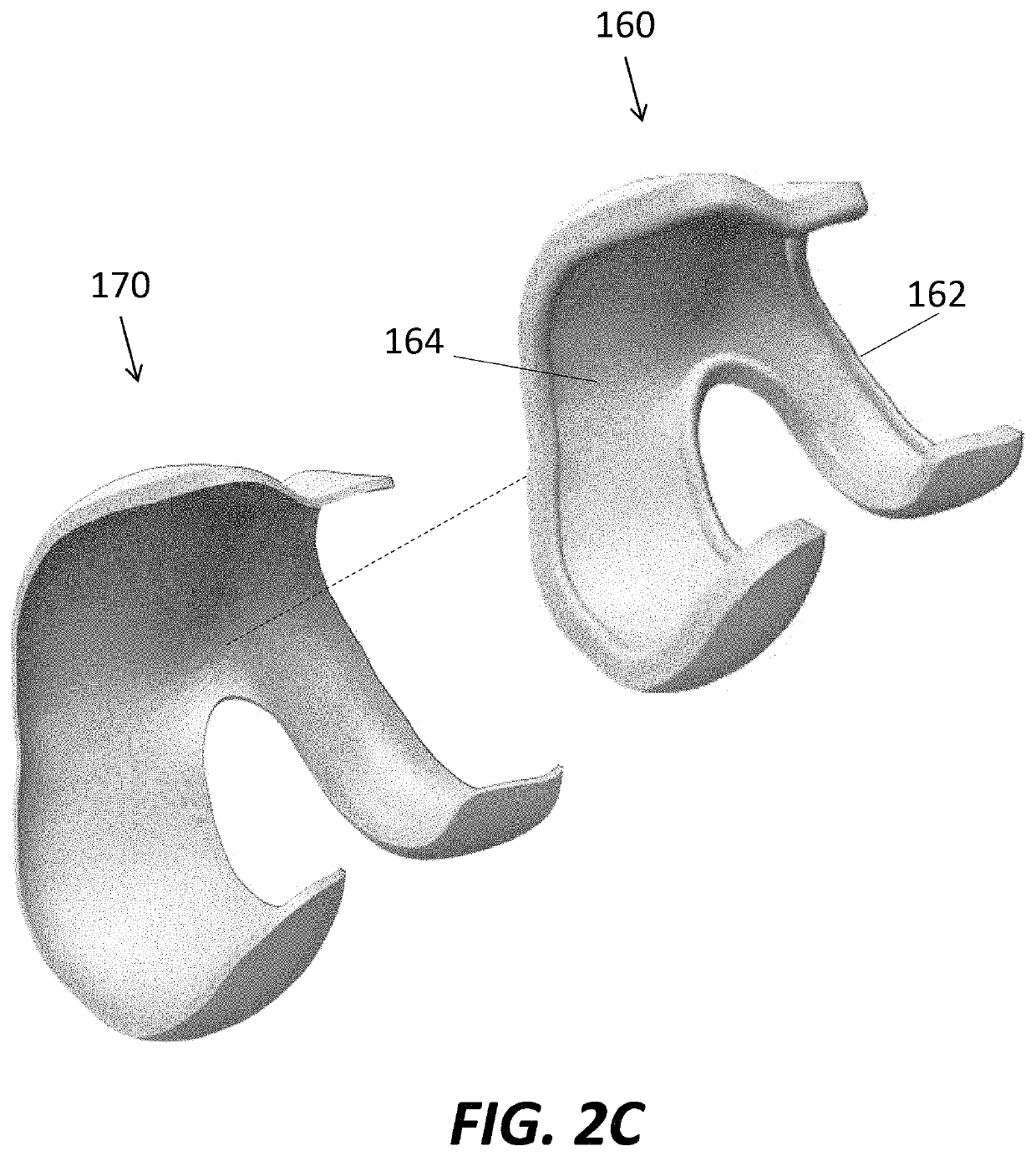Patient specific composite knee replacement
a composite knee and patient technology, applied in knee joints, prostheses, medical science, etc., can solve the problems of paradoxical, impaired function and mobility, and associated instability of joints
- Summary
- Abstract
- Description
- Claims
- Application Information
AI Technical Summary
Benefits of technology
Problems solved by technology
Method used
Image
Examples
Embodiment Construction
[0031]As used herein, the term “distal” means more distant from the heart and the term “proximal” means closest to the heart. The term “inferior” means toward the feet and the term “superior” means towards the head. The term “anterior” means towards the front part of the body or the face and the term “posterior” means towards the back of the body. The term “medial” means toward the midline of the body and the term “lateral” means away from the midline of the body. As used herein, the terms “generally,”“substantially,” and “about” are intended to mean the slight deviations from absolute are included within the scope of the term so modified. Like numbers refer to similar or identical elements throughout.
[0032]A healthy knee joint includes the interface between the distal end of the femur and the proximal end of the tibia. If the healthy knee joint becomes damaged due, for example, to injury or disease, knee surgery may be required to restore normal structure and function of the joint....
PUM
 Login to View More
Login to View More Abstract
Description
Claims
Application Information
 Login to View More
Login to View More - R&D
- Intellectual Property
- Life Sciences
- Materials
- Tech Scout
- Unparalleled Data Quality
- Higher Quality Content
- 60% Fewer Hallucinations
Browse by: Latest US Patents, China's latest patents, Technical Efficacy Thesaurus, Application Domain, Technology Topic, Popular Technical Reports.
© 2025 PatSnap. All rights reserved.Legal|Privacy policy|Modern Slavery Act Transparency Statement|Sitemap|About US| Contact US: help@patsnap.com



